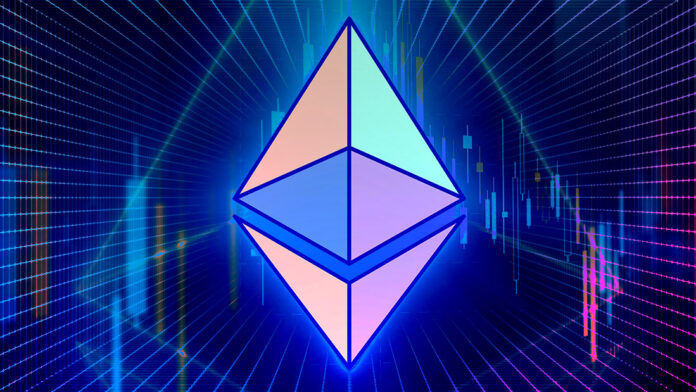Ethereum, one of the most renowned blockchain networks, recently underwent a significant transition from a proof-of-work (PoW) consensus mechanism to a proof-of-stake (PoS) protocol. This transition was a part of Ethereum’s long-awaited upgrade, aimed at enhancing network scalability, security, and sustainability. The shift to PoS marked a fundamental change in how Ethereum operates and secured its network.
Merge of Ethereum mainnet with the Beacon Chain
The merge, a crucial step in the Ethereum upgrade, brought together the Ethereum mainnet and the Beacon Chain. The Beacon Chain had been introduced earlier as the PoS consensus mechanism for Ethereum, providing a new approach to securing the blockchain. With the merge, the Ethereum network transitioned from relying on energy-intensive mining operations to operating on a PoS model, where network security is ensured through the participation of validators, or “stakers.”
Substantial reduction in energy consumption
One of the primary benefits of Ethereum’s transition to PoS is the significant reduction in energy consumption. PoW blockchains, like the previous version of Ethereum, required powerful hardware and large amounts of electricity to solve complex mathematical puzzles and validate transactions. In contrast, PoS protocols allow validators to secure the network by holding and staking their cryptocurrency holdings, thereby eliminating the need for energy-intensive mining operations. As a result, Ethereum’s energy consumption has decreased, making it more environmentally friendly and sustainable.
Increase in the amount of ETH staked
Since the transition to PoS, the amount of Ethereum (ETH) being staked in the network has experienced a remarkable surge. Staking involves locking up a certain amount of ETH to participate in the consensus mechanism and validate transactions. Validators who perform their duties honestly and maintain the network’s integrity are rewarded with additional ETH. This incentive mechanism has encouraged more participants to stake their ETH, as it offers the potential for both network rewards and appreciation in the value of their holdings. The increased amount of ETH staked further enhances the security and decentralization of the Ethereum network.
Emerging concerns about centralization and censorship
While the transition to PoS has brought several advantages, concerns about centralization and censorship have emerged within the Ethereum community. Critics argue that the shift towards staking may concentrate power in the hands of a few influential stakeholders, potentially jeopardizing the network’s decentralized nature. Additionally, there are concerns about the potential for censorship and decision-making control by entities with significant stakes. These concerns highlight the need for careful design and governance structures to maintain Ethereum’s principles of decentralization and openness.
Attention on liquid staking solutions like Lido
To mitigate some of the concerns regarding staking, liquid staking solutions like Lido have gained significant attention in the Ethereum ecosystem. Liquid staking allows individuals to stake their ETH while still retaining the ability to use it as collateral or trade it in decentralized finance (DeFi) protocols. It provides users with flexibility and liquidity, enabling them to actively participate in other DeFi activities without being locked into long-term staking commitments. However, concerns remain about the impact of liquid staking on the decentralization of Ethereum, as it introduces custodial elements and relies on third-party platforms.
Ethereum Cancun-Deneb upgrade
To address the economic and technical implications of liquid staking, Ethereum is preparing for its upcoming upgrade known as Ethereum Cancun-Deneb. This upgrade aims to refine the design and governance structures of liquid staking solutions within the Ethereum ecosystem. By introducing additional checks and balances, Cancun-Deneb seeks to strike a balance between the benefits of liquidity and the decentralized nature of Ethereum. The upgrade aims to create a robust framework that ensures the integrity and security of liquid staking mechanisms.
Addressing concerns about economic and technical implications
The Ethereum community recognizes the importance of carefully addressing the economic and technical implications of the upgrade to PoS. As Ethereum continues to evolve, it is crucial to strike a delicate balance between innovation and preserving the core values that underpin the network. By addressing concerns about centralization, censorship, and the impact of liquid staking, Ethereum can maintain its position as a leading and inclusive blockchain platform.
Foundation for layer-2 scaling solutions
The merge of Ethereum’s mainnet with the Beacon Chain not only facilitated the shift towards PoS but also laid the foundation for layer-2 scaling solutions. Layer-2 solutions offer scalability enhancements by conducting transactions and computations off the Ethereum mainnet, subsequently reducing congestion and gas fees. The merge created a solid base for layer-2 solutions to flourish, enabling developers to build and deploy decentralized applications (dApps) that can handle a significantly higher volume of transactions while maintaining Ethereum’s security and trustlessness.
Increase in adoption of layer-2 scaling solutions
Following the merge, there has been a notable increase in the adoption of layer-2 scaling solutions within the Ethereum ecosystem. Projects such as Optimism, Arbitrum, and Polygon have gained significant traction, providing scalability solutions that can handle thousands of transactions per second at a fraction of the cost compared to the mainnet. This increased adoption demonstrates the ongoing commitment of the Ethereum community to addressing the network’s scalability limitations, thereby ensuring a seamless user experience and expanding the possibilities for decentralized applications.
Ethereum becomes a deflationary network
Another consequence of Ethereum’s transition to PoS is the network’s shift to becoming deflationary. Unlike traditional monetary systems, where new money is constantly issued, Ethereum’s PoS model results in more ETH being burned than issued. Through the process of staking, ETH tokens are locked up, reducing their circulating supply. Additionally, a significant portion of transaction fees is burned, removing them permanently from circulation. This deflationary characteristic strengthens Ethereum’s value proposition as a store of wealth and positions it as a potential competitor to traditional inflationary currencies.
Macroeconomic challenges for Ethereum
Despite the positive developments following the transition to PoS, Ethereum faces some macroeconomic challenges. The ongoing global economic uncertainties, regulatory concerns, and increased competition from other blockchain platforms present hurdles for Ethereum’s growth. These factors, combined with delays in implementing Ethereum 2.0 upgrades, have tempered expectations of a rapid price surge for ETH in the short term. However, the long-term fundamentals of Ethereum, including its widespread adoption, developer community, and network effects, remain strong, providing a solid foundation for future growth.
Impact on price expectations
While the transition to PoS and the various upgrades have long-term benefits for Ethereum, their immediate impact on price expectations can be nuanced. Price dynamics are influenced by a multitude of factors, including market sentiment, investor demand, and overall market conditions. While the reduction in energy consumption and enhanced network accessibility are positive developments, the realization of their potential impact on the price of ETH will depend on a combination of internal and external factors shaping the cryptocurrency market.
Focus of the proof-of-stake upgrade
The primary focus of Ethereum’s proof-of-stake upgrade was to replace miners with stakers as the mechanism to secure the network. Mining, which relies on enormous computational power and energy consumption, was not sustainable in the long run. Proof of stake, on the other hand, leverages participants’ financial stake in the network to validate transactions and create new blocks. This shift in focus not only reduces the environmental impact but also enhances network scalability and accessibility, laying strong foundations for Ethereum’s growth and continued success.
















